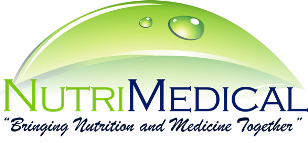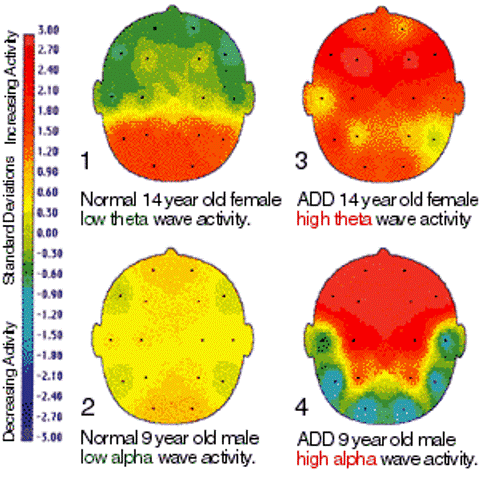What is Happening in the Brain of a Person with ADD and ADHD?
The most recent models describing what is happening neurologically in the brains of people with Attention Deficit Disorder suggest that several areas of the brain may be affected by the disorder. They include: Each of these areas of the brain is associated with various functions of the brain. Above is a sample Q-EEGs of two Attention Deficit Disorder children compared to two non- ADD ADHD children. The Attention Deficit Disorder children show excessive slow brainwave activity (theta and alpha ranges) compared to non- ADD ADHD activity. The slow brainwave activity indicates a lack of control in the cortex of the brain. “Lack of control” is pretty descriptive of Attention Deficit Disorder kids. EEG Biofeedback training seems to change this and normalize, at least temporarily.
The frontal lobes help us to pay attention to tasks, focus concentration, make good decisions, plan ahead, learn and remember what we have learned. The frontal lobes also help us to behave appropriately for a given situation. Emotional issues such as anger, frustration, and irritability that come on impulsively in some types of ADHD probably come from the pre-frontal cortex. The inhibitory mechanisms of the cortex keep us from being hyperactive, from saying things out of turn, and from getting mad at inappropriate times, for examples. These inhibitory mechanisms of the cortex help us to “inhibit” our behaviors..
CORE:
Protocols for Attention, Memory and Cognition ...
Cognition Plus two caps twice per day
Brain Power two caps twice per day
CDP Choline two caps twice per day
Uridine two caps twice per day
Ultra Thiamine B1 two caps twice per day
NeuroGEN two softgels twice per day
Mood Energizer one cap twice per day
BrainMAG one scoop in filtered water twice per day
Lumen Photon to Head Setting 3 for thirty minutes twice per day
CoQ10 Supreme Ubiquinol two softgels twice per day
SAMethyl one sachet under tongue in AM and between 2 to 3 PM under tongue

